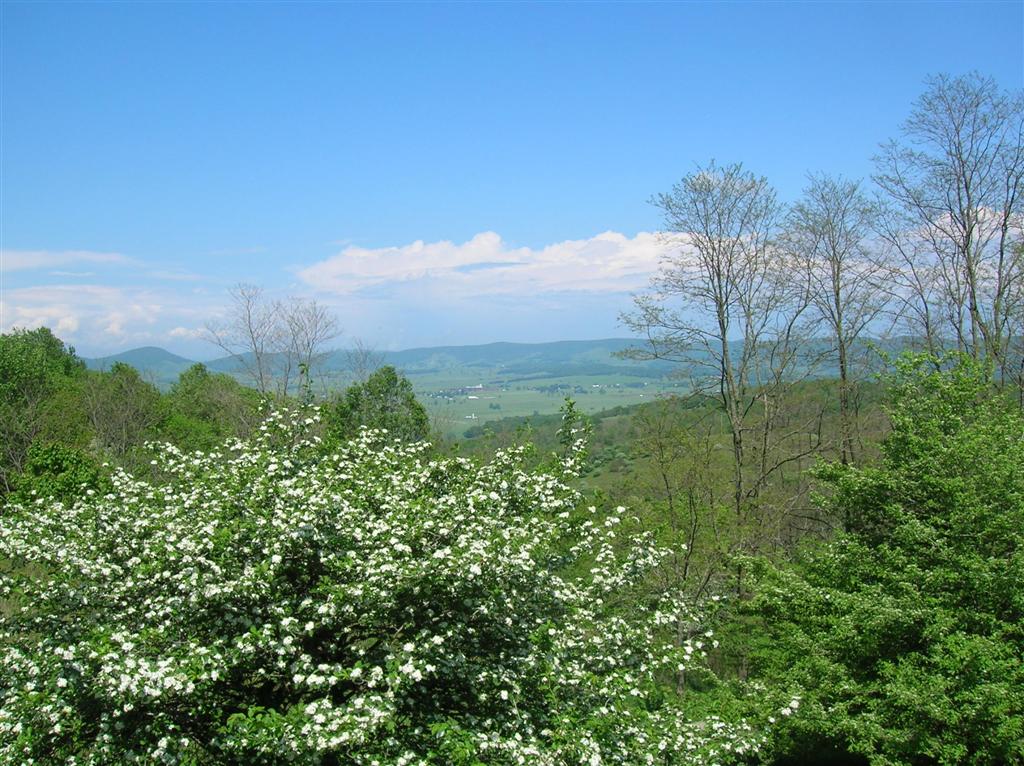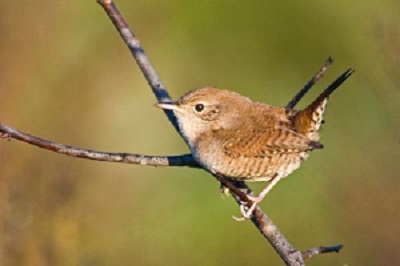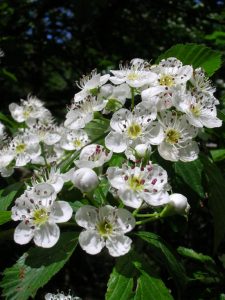By Eric Wallace

Burke’s Garden From Beartown Wilderness CO Ed Talbott
Little-known southwest Virginia peaks offer some of the East Coast’s most fantastic birding opportunities. And they’re dramatically under-Atlased.
Presently just two priority blocks found in high-elevation areas above 4,500 feet have seen Atlasing activity. Dispersed throughout southwest Virginia, while Whitetop and Mount Rogers have attracted much attention, most of these areas remain obscure.
“But that’s part of what makes them so great,” says Ed Talbott, a professor at Oakwood’s Appalachian College of Pharmacy. An avid Atlaser, he has coordinated with VABBA2 director Ashley Peele, Ph.D., to bird in high-priority, high-elevation areas throughout 2019 and 2020. “We’re talking about some of the state’s most pristine mountain landscapes and, often times, you have them entirely to yourself,” he says.
It helps that the locations offer one of the most fascinating birding opportunities on the East Coast. Studded with balds and rare southern Appalachian spruce-fir forest—which covers just 100 square miles (in Virginia) and is considered the nation’s second-most endangered ecosystem—the peaks are like high-elevation islands.Isolated areas form havens for geographically rare birds. Visitors may be treated to glimpses of species that typically breed only in Northern and Boreal forests.
The experience is quite different from, say, a hike off Skyline Drive.

“I’ve led hundreds of bird and nature walks, and, in my experience, pretty much everyone leaves talking about how amazing these [high-elevation areas] are,” says Aaron Floyd, executive director of the Blue Ridge Discovery Center. An avid birder, he has traveled the continent studying rare species and ecosystems. Comparatively, he says, “These mountains offer some of the coolest birding opportunities you’re going to come by.”
Rare species include Winter Wren, Brown Creeper, Golden-crowned Kinglet, and Yellow-rumped Warbler, to name a few. The peaks may be home to at least one new subspecies.
“We’ve seen a community of Yellow-bellied Sapsuckers staying year-round,” says Floyd. The medium, red-foreheaded woodpeckers typically breed in the Northeast and Canada. “We suspect they’re a subspecies, but need to gather further data and conduct serious studies to confirm that.”
Interested in helping Atlas in these fascinating high-elevation areas? Below, you’ll finds description of three of southwest Virginia’s most interesting—and under-birded—locations, all featuring peaks at or above 4,500 feet.

Hawthorn (CO Ed Talbott)
Garden Mountain Wilderness
Nestled amid the Jefferson National Forest is the 3,331-acre Garden Mountain Wilderness. Located about 12 miles from Tazewell, the mountain’s 4,710-foot summit overlooks the ringed-in valley of Burkes Garden—one of the state’s most isolated communities. Though reaching its peak requires a cross-country bushwhack along hunting paths, the Appalachian Trail brings 5 miles of readymade access along the Wilderness’s western edge. To the East is the Lick Creek Trail—a 3.7-mile, one-way system beginning along state route 623. (For a map, click HERE.)
Talbott plans to lead an expedition in June that will carry birders both to spruce-fir forests atop Garden Mountain and into Virginia’s highest elevation bog. At 4,500 feet, he expects the latter may yield sightings of Northern Waterthrush, various flycatchers, “and maybe even really displaced breeders, as it’s the only bog habitat at this altitude in the state.”
If you’d like to join the walk, or get more information, email Talbott at: aquilaet@gmail.com. For a list of birds spotted in and around Burkes Garden, click HERE.
Clinch Mountain Wildlife Management Area
At 22,477 acres, Clinch Mountain is Virginia’s largest and most biologically diverse WMA. Spread across four of the state’s most sparsely populated counties—Smyth, Washington, Russell and Tazewell—visitations are more trickle than deluge.
This, says Talbott, is to the advantage of birders. And particularly those that enjoy backcountry solitude.
Rapid variances in elevation (from 1,600-4,700 feet) have led to the development of unique forest environments. Hikers can watch tree species from far northern and much more southern areas bleed into one another in a matter of just a few miles. At nearly 3,700 feet, the 350-acre Laurel Bed Lake attracts unexpected waterfowl and shorebirds. Remote spruce-fir forests and high-elevation meadows can be found atop Beartown and Flattop mountains.
Combined, these factors make a birders’ treasure trove. (Though data for peaks is lacking, here’s a juicy list of sightings around Laurel Bed Lake.)
Interspersed with beaver dams, the lake’s boggy headwaters offer habitat for Golden-winged Warbler, Wood Duck, and Pied-billed Grebe. Woodlands bring eastern hardwood breeders like Wood Thrush and Eastern Wood-pewee. Higher elevations reveal jewels like Black-throated Blue, Black-throated Green, Chestnut-sided, Cerulean, and Magnolia warblers. Also, Blue-headed vireo, Rose-breasted Grosbeak, and Veery. Atop Beartown, Talbott reports hearing Golden-crowned Kinglet and Winter Wrens.
For information about hiking, access, and trails, call the VDWR’s Region 3 Office: (276) 783-4860.
Iron Mountain Trail, Grayson Highlands National Recreation Area
This gem can be accessed from downtown Damascus, an ultra-funky, award-winning trail town with amenities galore. Formerly part of the Appalachian Trail—which was rerouted to include Mount Rogers in 1972—and located in the Grayson Highlands National Recreation Area, the trek is well-maintained, isolated, and offers plenty of camping opportunities (including three AT-style shelters). Hikers will pass along 4,000-foot ridgelines through rhododendron thickets and hardwood forests, crossing many streams, springs and creeks along the way. Spectacular southward views abound. At the near 4,500-foot summit of Iron Mountain, look for spruce-fir forests.
For a detailed hiker’s guide with additional peaks included, here’s a story from Backpacker Magazine. For a list of birds spotted along the trail, click HERE. To inquire about trips with local birders, or get more info, contact the Blue Ridge Birders.
Special thanks to Ed Talbott for sharing his regional knowledge, as well as maps, for this story!


